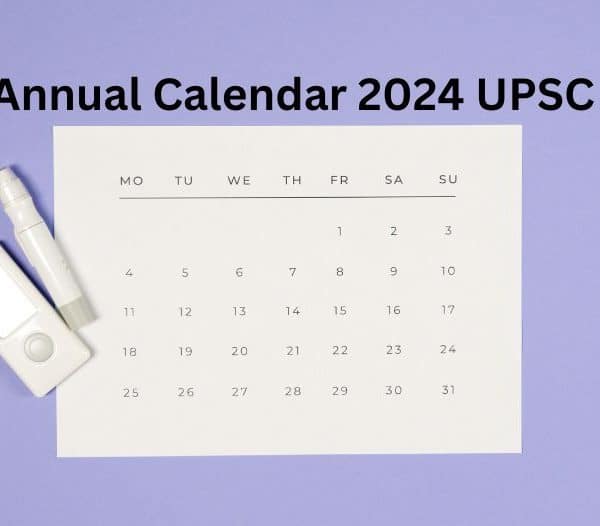The UPSC 2020 Prelims took place on the 4th of October 2020, and now everyone is discussing the new question paper, the UPSC 2020 Prelims cut-off marks and next year aspirants are trying their best to predict the next year’s patterns to study accordingly.
The following is the exam pattern of UPSC Prelims.
| UPSC Prelims 2020 Exam Pattern | ||
| Paper | GS I | CSAT II |
| Total marks | 200 | 200 |
| Number of questions | 100 | 80 |
| Duration | 2 hours | 2 hours |
| Negative marking | ⅓ marks deduction per question | ⅓ marks deduction per question |
| Type | Objective | Objective |
| Nature | Screening | Qualifying |
Prelims 2020 General Studies Paper 1
- The candidates said that GS Paper-1 was moderately tough with major sections focusing on Agriculture, Indian Economy, and Banking.
- Students believe that there were more questions based on Economy and Environment than on Literary subjects like History, Polity, and Current Affairs.
- UPSC prelims are conducted manually on pen-and-paper and provide a total time duration of 2 hours for each paper.
- The questions are in Multiple Choice Questions (MCQ) format. Wrong responses give you a negative marking of 0.33.
- Each question paper carries a total of 200 marks. Every student is required to score a minimum of 33% to qualify for the exam.
- The General Studies Paper 1 carries 100 Multiple Choice Questions (MCQ). The students are given four choices out of which they have to select one. Students have to finish the given questions in 2 hours.
Also Read : Time Table for UPSC Preparation 2021: Here’s the Study Schedule You should Follow
Topics Covered in GS Paper
The UPSC Exam syllabus is extensive and covers a whole myriad of topics, so it is one of the biggest concerns for every candidate to be able to predict which topics will the questions come from and to be ready with the required information and intelligence to be able to deal with the questions.
Polity
In the GS Paper 1 of UPSC Prelims, 2020 maximum questions were from Indian Polity and Civics with a whopping number of 16 questions. The questions were application based and descriptive, highly influenced by current affairs. The questions covered topics and areas of Preamble, Fundamental Rights, Directive Principle of the State Policy, Basic Structure, Union Government. With the entire paper focused on basic concepts and how to apply it in real life, there were questions from MPLAD, Parliament sessions, Parliamentary Democracy, Gandhism, Constitutional Government, Marxism as well.
Economy
The economy section had 14 questions on Gold Tranche, FDI, TRIMS that were a good mix of direct or concept based. There were also questions on the Monetary Policy of RBI, the role of Cooperative Banks.
Science
The science section had 10 questions mostly taken by Current Affairs in Science and Technology and it’s recent trends in areas of Artificial Intelligence, Blockchain Technology, Nanotubes. The students just had to keep an eye out for technology development and trends to be able to solve all these questions.
History and Geography
The 18 questions from History covered topics mainly from the Ancient period, Medieval period, and Culture. The geography section had 10 questions on Geography and Agriculture. Some questions were technical and asked about types of soil, climate, and fertilizer for crops while others were based on geographical locations.
Environment
The environment section has recently become a staple for UPSC exams to answer to the growing need of the country in the field of Environment Protection and Sustainability. The paper had 17 questions plainly based on related Current Affairs, pollutants, National Parks and BioFuels, and Eco-friendly procurements and trends in recent times.
Current Affairs
The Current Affairs section is where UPSC saves its surprises for the aspirants. This year, the paper saw the heavy influence of the global pandemic due to Covid-19. The 15 questions from Current affairs were Government Schemes like Kisan Credit Card and on animal cells and vaccines.
Paper-1 Questions Asked and Difficulty Level
| Section | Number of Questions | Difficulty Level |
| Polity | 16 | easy to moderate |
| Economy | 14 | easy to moderate |
| Science | 10 | easy to moderate |
| History and Geography | 18 | moderate to difficult |
| Environment | 17 | moderate |
| Current Affairs | 15 | moderate |
Prelims General Studies Paper-II
- GS Paper-II is qualifying in nature and not considered as important as GS Paper 1 as only scores of Paper-I is considered to reach the cutoffs.
- The weightage for the second paper is only 33%.
- Aspirants have always claimed every year that the second paper is easy to moderate.
- Students just have to score 33% marks in Maths and Reasoning to qualify.
- In GS Paper-2, the strength of questions in Mathematics and Comprehension was equally balanced and is comparatively easy to answer.
| UPSC Prelims Subject Wise Marks Distribution | ||
| Topics Covered | Number of Questions | Total Marks |
| Current Affairs | 14 | 28 |
| Geography | 12 | 24 |
| Indian Economy | 13 | 26 |
| Environment | 13 | 26 |
| Polity | 12 | 24 |
| General Science and Tech | 9 | 18 |
| History | 13 | 26 |
| Art and Culture | 5 | 10 |
Conclusion
Though the UPSC Prelims for 2020 are over, however, the battle is still not over. People can only guess about what to expect from this year’s Prelims but the truth is no one can know anything for sure until the results come out. The result date for prelims has been set for July 2021. Until then it is best for candidates to focus on their preparation for the UPSC Mains which will be conducted in January 2021. The time is less and the syllabus is huge. The effort required is twice the amount. Focusing on preparing will make it easier to get to your long-term goal instead of worry about the short-term one such as the Prelims.
Also Read : UPSC Prelims 2020: Paper Analysis and Expected Cut-Off For This Year






